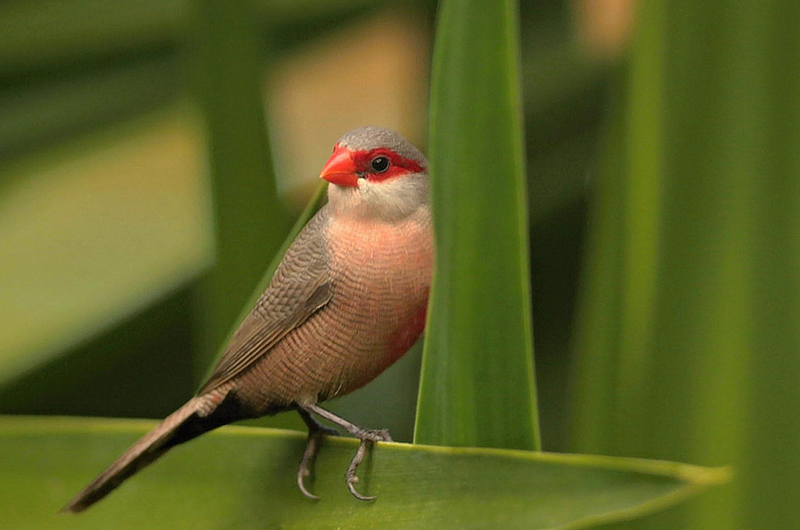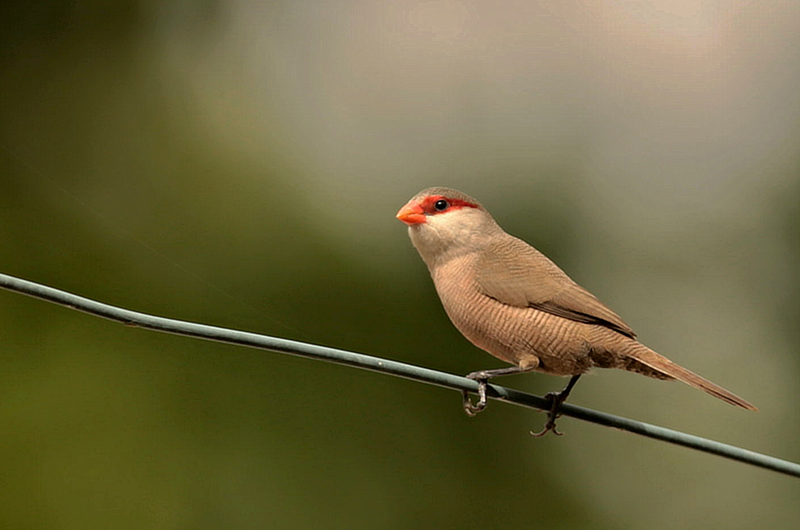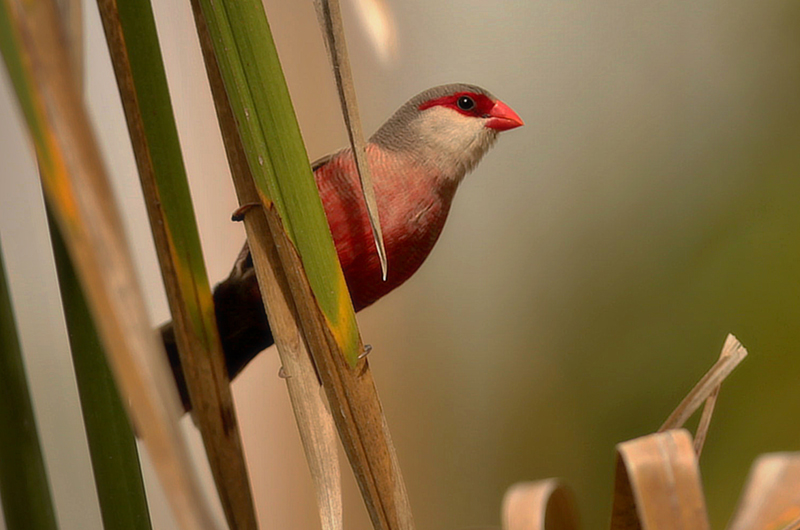Pair of St. Helena Waxbills or Common Waxbills (Estrilda astrild). Photo: José Luís Barros
Article kindly provided by Glenn Johnson
The St. Helena Waxbill (Estrilda astrild) is one of the many colourful and exotic foreign finches that are available to Australian Aviculturists. The St. Helena’s natural habitat ranges from South Africa, Madagascar, Mauritius and the Island of St. Helena. These little finches are called Common Waxbills in South Africa, indicating how numerous they are.
Description
Describing the St. Helena is a little difficult, but here goes. Brown and finely barred darker above. Mostly pinkish below, finely barred on sides. Under tail black, crimson streak over eye and beak red. The hen is slightly smaller and shorter in the tail, and lighter markings and less pink on the abdomen. Red eye streak is lighter and smaller and the beak is more orange. Under the tail is more brown than black like the male.
Housing and Feeding
St. Helena’s make idea finches in a mixed aviary being both active and unobtrusive to other occupants. Many breeders find great success in colony breeding and many weaver breeders find that housing weavers with St. Helena’s provide the weavers with ideal host parents. Like many foreign finches they heavily depend on live food to be truly successful in rearing their chicks. Mine nearly knock me over in the rush to the mealworms and fruit fly. Along with live food they relish seeding grasses, such as millet sprays, chickweed etc.
Breeding
The Saints choose many nesting sites. Mine have nested in cane baskets, wooden finch boxes, coconuts, gourds, wire cylinders and also built their own nests in the tea tree lining the aviary walls.
St. Helena’s make rather a unique nest, which is dome shaped, built of dry grass and coconut fibre, lined with feathers. On top of this, another is built, not quite complete to act as a camouflage to the real McCoy. Clutches of eggs range from 3-7 and incubation usually commences after the 2nd or 3rd egg is laid. They are good sitters and don’t desert the nest easily. Incubation takes approximately 12 days with both parents sharing. After hatching, the young remain in the nest for three weeks before fledging and then three weeks further on, they are fully independent and can be removed to the holding cage.
“St. Helena’s make idea finches in a mixed aviary being both active and unobtrusive to other occupants.”
Mutations
The St. Helena has one colour mutation being fawn. The fawn mutation when first produced was rather expensive and hard to come by. In recent years, many have been produced and consequently prices dropped and are now similar to the cost of the natural bird. Many breeders have mixed feelings about mutations.
Conclusion
In summary, these delightful little waxbills make great aviary inhabitants, being hardy, colourful and good breeders given the right conditions.
St. Helena Waxbill or Common Waxbill (Estrilda astrild). Photo: José Luís Barros







